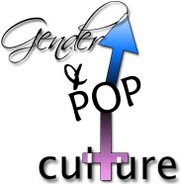
Society is no longer ruled by what we need. Instead the world of consumerism and advertising is at the forefront of our beliefs telling us who we should be, how we should dress, and what we “need.” In this culture the belief is that men are superior and should therefore be seen as strong, rigid and masculine. It is rare for men to be portrayed as anything but this normative ideal. This characteristic alone defines what a man should be and anything that might oppose this trait is seen as unmanly. The accepted practice of patriarchy has constructed an unrealistic ideal for men, causing a desire to prove their masculinity and dominance, exemplified throughout the world of advertising and fashion.
What the advertising industry is establishing is that “real men” need to show they are naturally masculine. Johnson explains “to see the world through patriarchal eyes is to believe that women and men are profoundly different in their basic natures, that hierarchy is the only alternative to chaos, and that men were made in the image of a masculine God with whom they enjoy a special relationship.” He goes on to explain the different strengths and weaknesses of the two genders and the basic stereotypical roles given to men and women in a family setting (Johnson, 95). Reading through them, it is obvious why men are constantly objectified as masculine. Men want to buy things that personify them as strong, lean, and capable even if the ideal is unrealistic. Apparently to be manly means to either be fit and sleek or scruffy and intense according to the ads above.
The media is an important source of information about gender. According to Newman “They promote stereotypes of masculinity and femininity, not only by choosing which kinds of men and women to portray but also by choosing which kinds of stories and programs to run” (89). Men have an advantaged position in society and because of this they take on highly traditional stereotypes of men or they have negative violent portrayals of men. There are a lot of hyper masculine characters which portray dominance. Newman goes on to explain that "far from being demeaning and destructive, these images have the luxury of being harmlessly humorous. Making fun of masculinity-like making fun of heterosexuality or of white people-bears little, if any, of the cultural and historical weight that accompanies stereotypical portrayals of women and other disadvantaged groups” (Newman, 93). These images of men being objectified are still less demeaning than those of woman being objectified. The dominance of men in the patriarchal society not only established this but often promotes such inequality. If you click on the collage above enlarging it, the white and yellow advertisement for men’s and women’s underwear establishes the different positive characteristics for men and women. You can see that the ad uses words like “large”, “prominent”, “broad”, and “strong” as words to describe male features while the female has words like “smooth”, “firm”, and “delicate” to describe certain characteristics. If this collage doesn’t exemplify the need for stereotypical masculinity among men, I don’t know what does.
Newman, David M. Identities and Inequalities: Exploring the Intersections of Race, Class, Gender, and Sexuality. New York: McGraw-Hill, 2007 (75-105).
Johnson, Allan G. “Patriarchy, the System: An It, Not a He, a Them, or an Us.” The Gender Knot: Unraveling Out Patriarchal Legacy.
